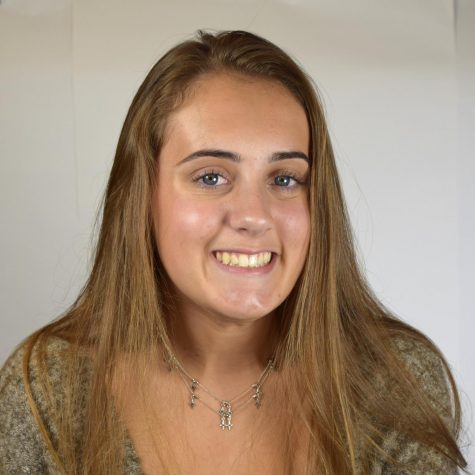Retailers Changing Body Image Attitudes
March 29, 2017
Social media has made it easy for teens to share pictures of themselves with peers. It has also, however, contributed to the pressure experience by girls, in particular, to conform to certain conventions of appearance.
As social media use increases, so does the pressure put on teenage girls to look pretty in the photos they post in order to fit society’s ideal standard of beauty. These expectations include white teeth, smooth, tan skin, a flat stomach. These standards can be met by using apps such as Facetune which can edit photos in order to make one’s appearance more like that of celebrities such as Kylie Jenner.
According to a study by the Renfrew Center Foundation, 48% of women who edit pictures of themselves enhance their looks by removing blemishes or adding color to look less pale. The same study proved that approximately 1 in 8 women admit to editing their photos because they just are not happy with how they look in general, while some edit to make themselves look thinner.
The urge to edit one’s photos comes from the influx of photos from celebrities such as Kim Kardashian, who have had operations such as plastic surgery, which in turn promotes unrealistic body standards, especially in young women.
Users obsessing over selfies may also suffer from Body Dysmorphic Disorder, a body-image disorder characterized by persistent and intrusive preoccupations with an imagined or real defect in one’s appearance.
During the “Ideal to Real TODAY/AOL Body Image survey,” 65% of teenage girls said that seeing their pictures on social media actually boosted their confidence, and 40% said social media helps them present their best face to the world. However, the same study revealed that 55% percent of teen girls and 34% of teen boys said that overall, social media makes them feel more self-conscious about their appearances.
More than half of women admit to editing their social media photos, and 18% of those surveyed admitted that their profile picture is so heavily edited that it is not a realistic representation of themselves.
A solution to this problem is dependent on the media and leading companies revising their advertising methods. Fashion and acting companies employ women who fit a narrow standard of beauty. However, brands such as Aerie and Milk Makeup have started to utilize a diverse group of models to challenge beauty standards and the promote acceptance of differences in appearance.
After lingerie brand Aerie launched their #AerieReal campaign in 2014, the retailer’s sales grew 20% in the 2015 fiscal year, and then 32% in the 1st quarter of fiscal 2016. The bra-and-underwear brand is still making headlines for its advertising campaigns, which includes the phrase “the real you is sexy.”
Aerie stopped retouching their photos and has showcased different body types with models such as Barbie Ferreira and Iskra Lawrence, while lending its support to the National Eating Disorders Association. The chain has also encouraged customers to share authentic pictures of themselves with the #AerieReal hashtag.
Self consciousness caused by social media stems from advertising campaigns using celebrities who have been photoshopped to create unrealistic beauty standards for young girls and women. This problem must be fixed at the root.
Instead of encouraging girls to ignore what they see in the beauty and fashion industry, which is an impossible request, the industry must change itself. Brands may fear that using non-traditional models will cost them, but evidence shows that they benefit from relating to the average person. With the introduction of unedited models in campaigns, beauty standards will become more realistic.



